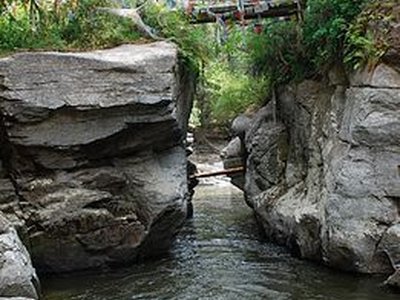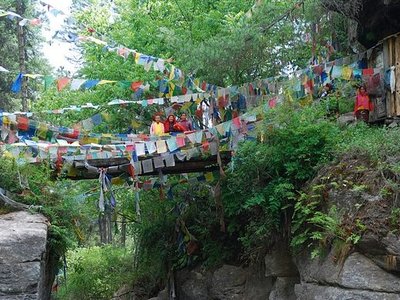The Burning Lake


Though it’s known as Mebar
Tsho, or “the Burning Lake,” this sacred site is not quite a lake at all, but rather a pool along a river in the Tang Valley. Local legend says that the water
contained a hidden holy treasure uncovered through divination by one of Bhutan’s most important religious figures, Terton Pema Lingpa, in the late 1400s.
Terton Pema Lingpa is thought to have been the reincarnation of Padmasambhava, an ancient guru also known as the Second Buddha. According to religious tradition, in the 8th century Padmasambhava hid secret teachings containing Buddhist wisdom for
terton
, treasure revealers like Pema Lingpa, to unearth in the future so his principles could live on.
In the 15th century, Pema Lingpa had a vision that treasure was hidden in a pool where the Tang Chhu River widens. When the locals questioned the validity of his prediction, he submerged himself in the water holding a lit butter lamp, and resurfaced with a chest and a scroll, the lamp still aflame. Until that point, the pool had been referred to as Nya Ring Brag, translating to “Long-Nosed Cliff” for the cliff faces that surround the area. But from then on, this body of water assumed the name Mebar Tsho, or the Burning Lake.
A conflicting hypothesis presents the slightly different narrative that the name Mebar Tscho actually references another treasure revealer by the name of Terton Sherab Mebar, who is also said to have uncovered treasure teachings from the lake.
Still, the Burning Lake remains one of the region’s most sacred places and a pilgrimage site for many Bhutanese people. Colorful prayer flags fly around an altar dedicated to Terton Pema Lingpa, and butter lamps can be found scattered on the riverbanks as tribute.